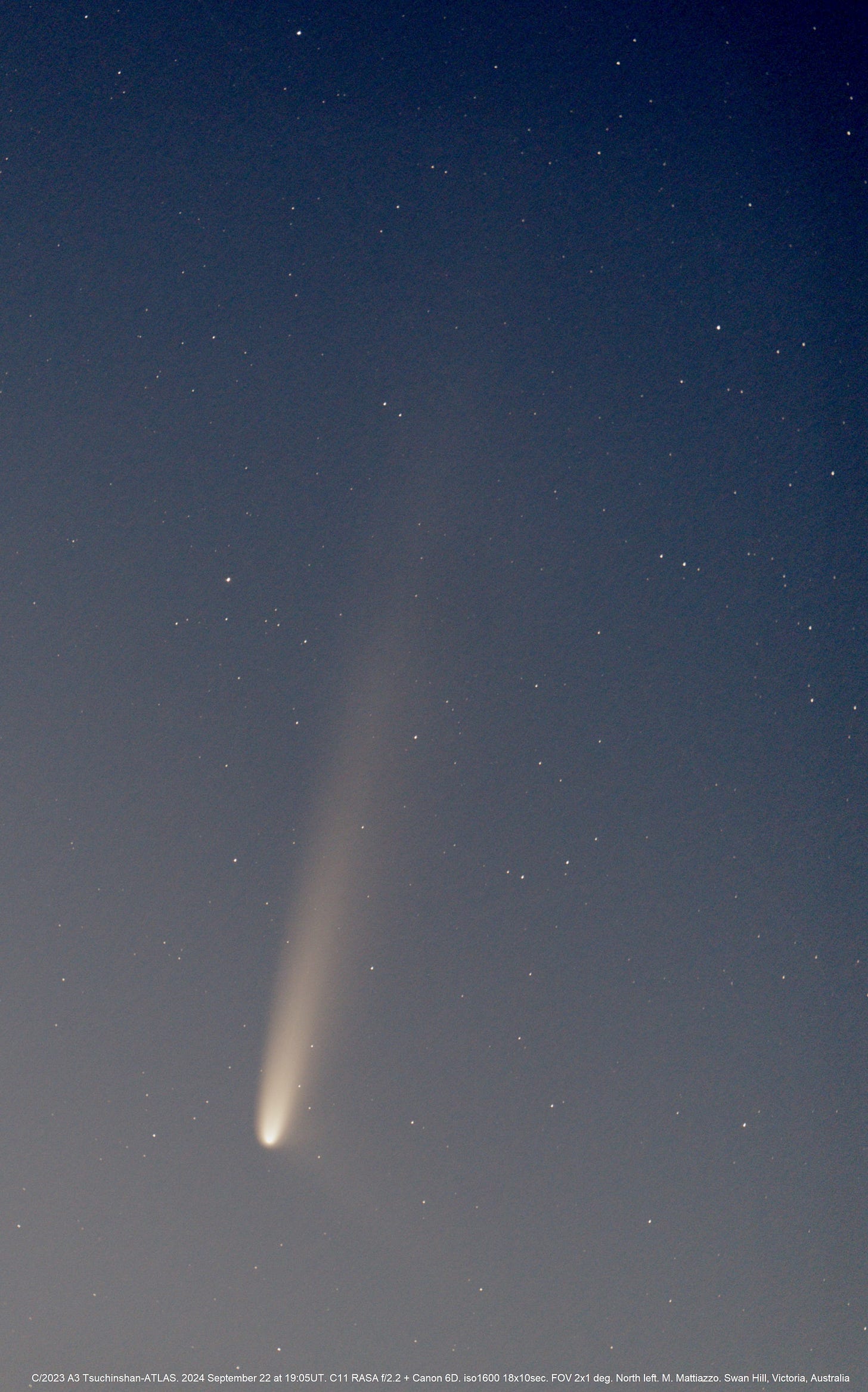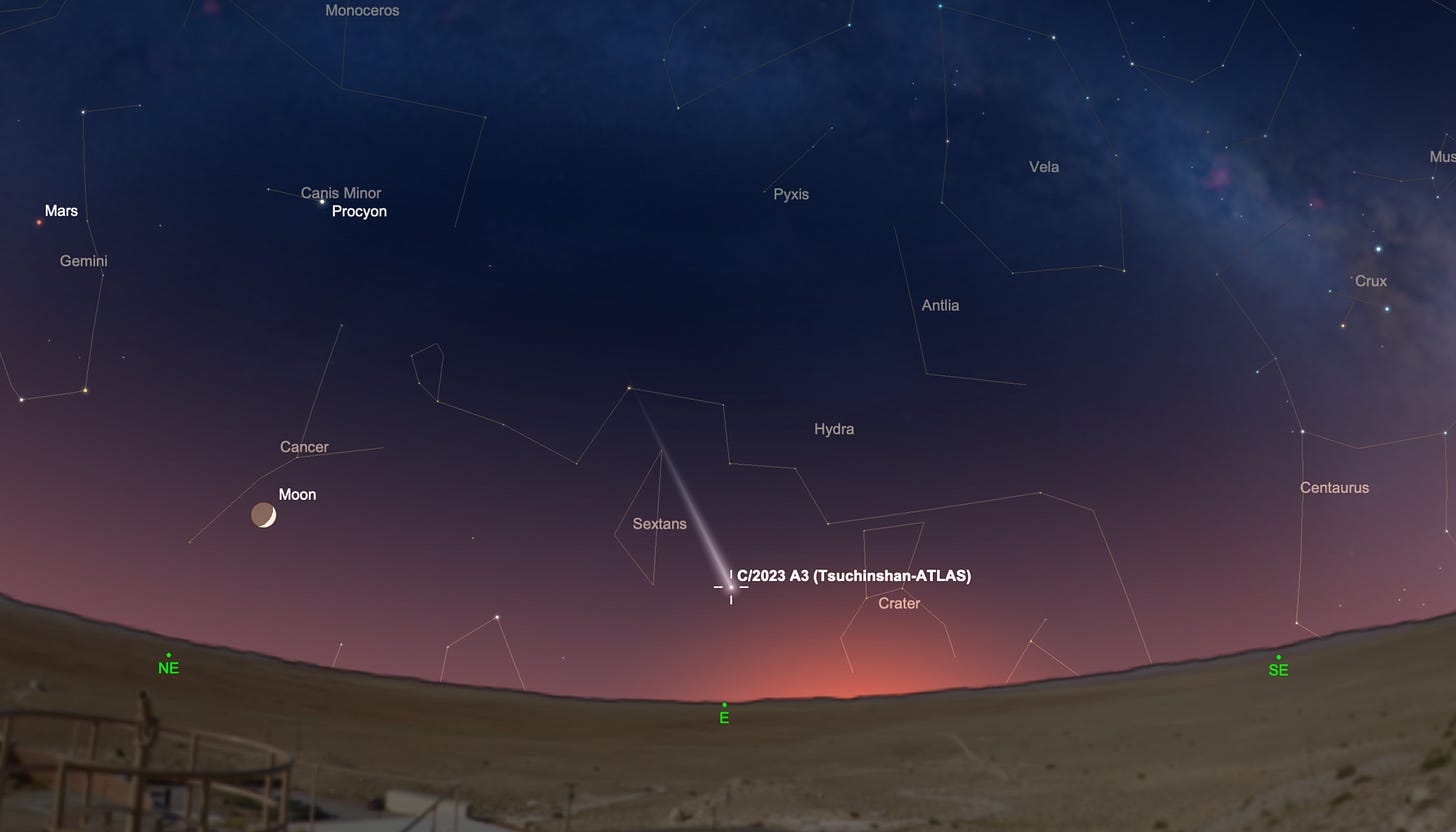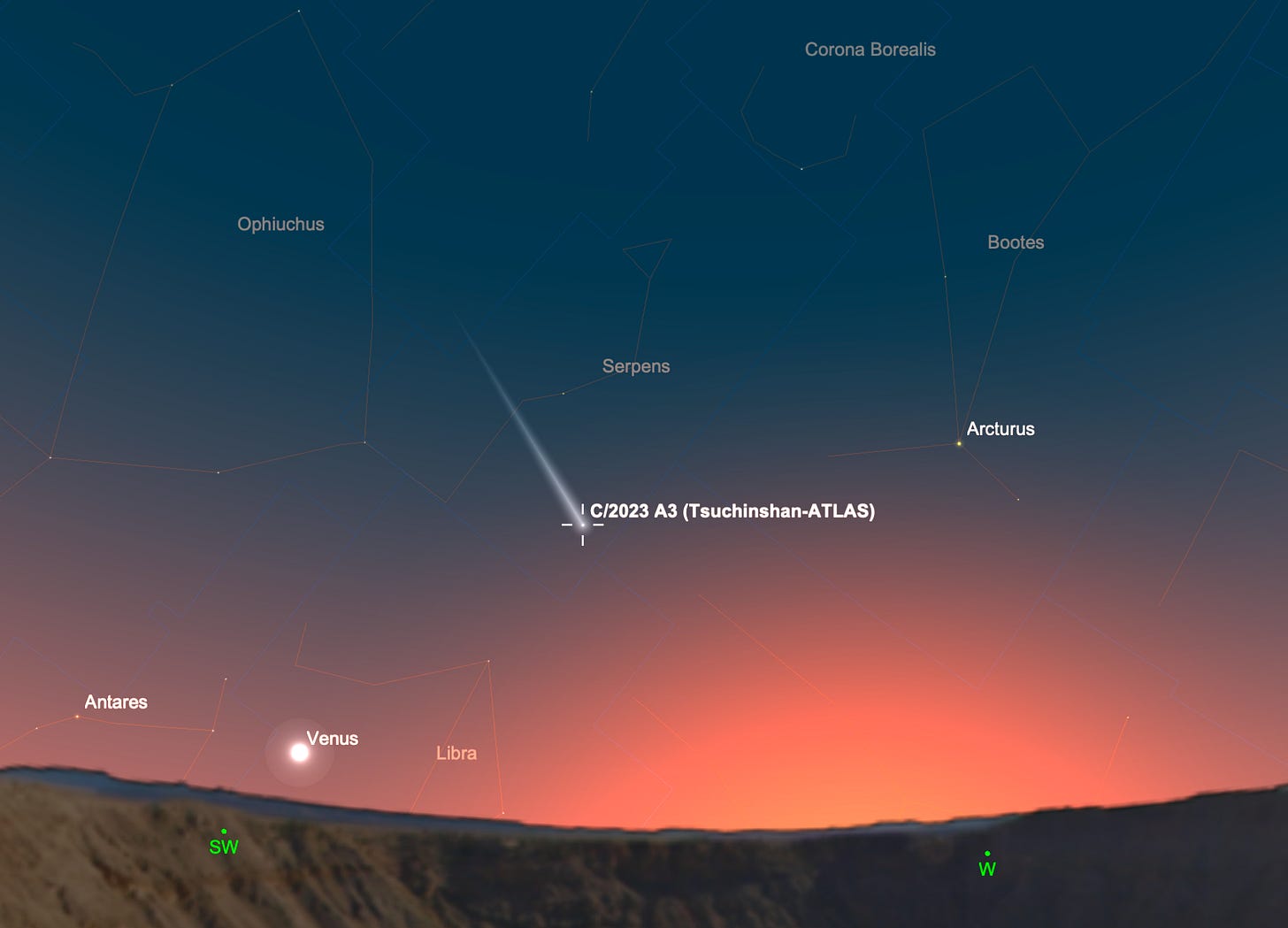Get Ready for a Bright Comet
Comet C/2023 A3 (Tsuchinshan-ATLAS) Lives Up To Its Promise (So Far)

Comet C/2023 A3 (Tsuchinshan-ATLAS) has emerged in the morning sky for observers in the southern hemisphere, and so far it seems to be living up to its billing as the brightest comet in years. The comet has brightened to naked-eye visibility and reports suggest it will continue to brighten in the next few weeks. Observers in the northern hemisphere get a crack at seeing the comet in later in September and in to October in the evening sky.
Astronomers first observed this little interloper from the Oort Cloud at Purple Mountain (Zijinshan, or ‘Tsuchinshan’) Observatory in China on January 9, 2023, and at the robotic survey Asteroid Terrestrial-impact Last Alert System (ATLAS) in South Africa on February 22, 2023. At the time, it was a very dim 18th magnitude. A year later, as it approached the plane of the solar system, the comet brightened to 13th magnitude, bright enough to detect visually, with some difficulty, in a 15-inch or larger telescope. By April 2024 it reached 10th magnitude and revealed a tail as long as 15’ in photographs.
The comet is small, just one or two kilometers across. But as it warms, the outer layers of this dirty cosmic snowball sublimate and a glowing gaseous halo or ‘coma’ grows larger. The comet also ejects a lengthening tail away from the Sun. Spectral measurements show Comet C/2023 (A3) is relatively carbon-depleted and has a large dust-to-gas ratio. With such a dusty makeup and an expected close solar approach, it may grow a long and reflective dust tail as it rounds the sun and gets closer to Earth.
Through most of September, the comet was too close to the Sun and remained too dim to observe. But that will change quickly. The comet reaches perihelion on September 24, 2024 when it lies 0.39 astronomical units (AU) from the Sun, about the same distance as Mercury. On October 12, 2024 it comes nearest to Earth at a distance of 0.47 AU or about 70 million kilometers.
How bright will it get? Comets are notoriously hard to predict, has grown as bright as 2nd or 3rd magnitude, bright enough to see without optical aid. But it continues to bright and may outshine the nifty little Comet C/2020 (F3) NEOWISE in 2020. If we’re lucky, it may grow even brighter.
How To See Comet C/2023 A3 (Tsuchinshan-ATLAS)
For much of September 2024, the comet lies too close to the Sun to see from Earth. It emerges into the sky in late September and by month’s end will lie about 23° from the Sun with – we hope – an impressive tail. At this time, the comet is best seen just above the eastern horizon in the morning sky in the southern hemisphere in the constellation Sextans.

It will barely peek above the horizon for northern hemisphere observers from about Sept. 27 – Oct. 2, then becomes briefly unobservable as it moves into southern Leo from Sept. 28 to Oct. 5. The comet moves eastward into Virgo and, by about October 11, emerges into the evening sky for northern hemisphere observers and moves well above the western horizon over the coming days (southern observers will struggle to see the comet just above the western horizon just to the right of the Sun). For the last two weeks of October, the comet and its dusty tail may be visible in evening twilight without optics and become even easier to see as the sky darkens. It may grow nearly as bright as Venus – this remains to be seen – and become one of the brightest comets visible from the northern hemisphere in many decades. We will have to wait and see – fingers crossed.

While we all hope the comet will grow bright enough to see with the naked eye, it might help to bring a pair of binoculars to help pull the comet out of the twilight and get a better view of its coma and tail.
Towards the end of October, the comet dims steadily and may reach 4th or 5th magnitude and rise higher in the evening sky. It continues to fade into November below naked-eye brightness.
Whatever happens to C/2023 A3 (Tsuchinshan-ATLAS) as it approaches the Sun, it won’t be back this way soon, or possibly ever. The comet comes from the distant Oort Cloud, a spherical shell of perhaps a trillion comets outside the orbit of Neptune and extending perhaps as far as halfway to the nearest star. The comet is also entering the inner solar system in a retrograde orbit (opposite the planets) at a high inclination of about 139º. It will largely avoid interacting with the gas giants like Jupiter and Saturn so its orbit will not be perturbed by them. Current projections show a hyperbolic (open) orbit which will send the comet on a path to escape the solar system. So it’s likely a ‘one and done’ visitor from the most distant reaches of our solar system. See it while you can!

